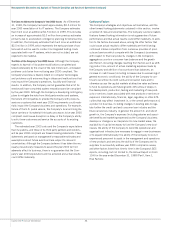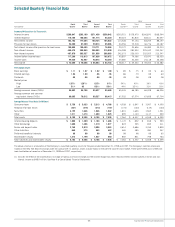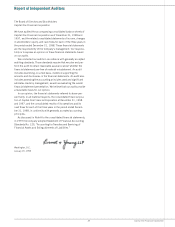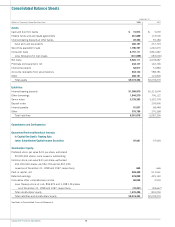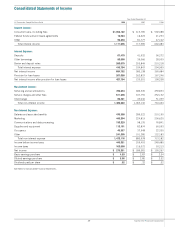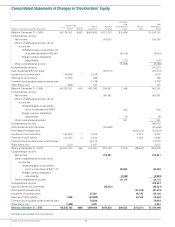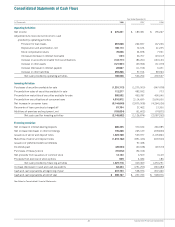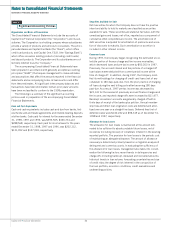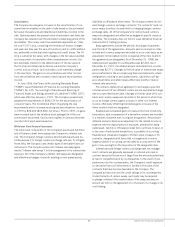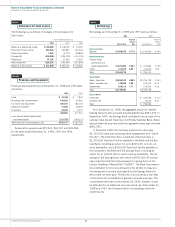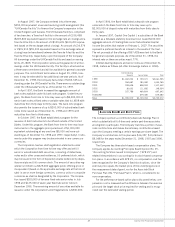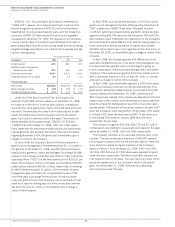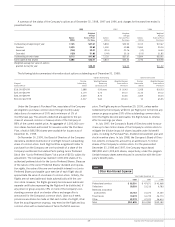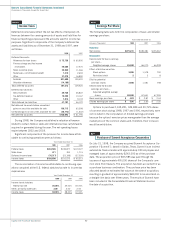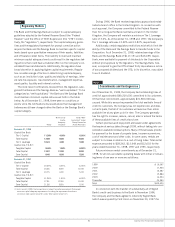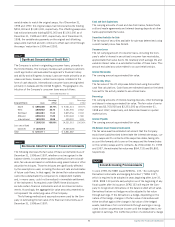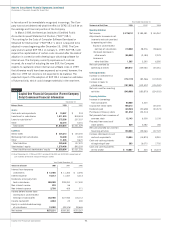Capital One 1998 Annual Report Download - page 46
Download and view the complete annual report
Please find page 46 of the 1998 Capital One annual report below. You can navigate through the pages in the report by either clicking on the pages listed below, or by using the keyword search tool below to find specific information within the annual report.
44Capital One Financial Corporation
Notes to Consolidated Financial Statements (continued)
(Currencies in Thousands, Except Per Share Data)
Premises and Equipment
Premises and equipment are stated at cost less accumulated
depreciation and amortization. Depreciation and amortization
expense are computed generally by the straight-line method over
the estimated useful lives of the assets. Useful lives for premises
and equipment are as follows: buildings and improvements
—
5-39
years; furniture and equipment
—
3-10 years; computers and
software
—
3 years.
Marketing
The Company expenses marketing costs as incurred.
Credit Card Fraud Losses
The Company experiences fraud losses from the unauthorized use
of credit cards. Transactions suspected of being fraudulent are
charged to non-interest expense after a sixty-day investigation
period.
Income Taxes
Deferred tax assets and liabilities are determined based on differ-
ences between the financial reporting and tax bases of assets and
liabilities, and are measured using the enacted tax rates and laws
that will be in effect when the differences are expected to reverse.
Comprehensive Income
In June 1997, the FASB issued SFAS No. 130, “Reporting Com-
prehensive Income” (“SFAS 130”). SFAS 130 established new
rules for the reporting and display of comprehensive income and its
components. In 1998, the Company adopted the requirements of
SFAS 130, which require unrealized gains or losses on securities
available for sale and foreign currency translation adjustments to
be included in other comprehensive income. Prior to the adoption
of SFAS 130, such amounts were reported separately in stockhold-
ers’ equity. The adoption of SFAS 130 had no impact on the Com-
pany’s net income or total stockholders’ equity. As of December 31,
1998, 1997 and 1996, cumulative other comprehensive income
net of tax consisted of $63,260, $2,612 and $2,080 in unrealized
gains on securities available for sale and $(2,605), $(73) and
$(132) in foreign currency translation adjustments, respectively.
The provisions of SFAS 130 were applied retroactively.
Earnings per Share
Earnings per share are calculated in accordance with SFAS No.
128, “Earnings per Share” (“SFAS 128”). Pursuant to SFAS 128,
basic earnings per share is based only on the weighted average
number of common shares outstanding, excluding any dilutive
effects of options and restricted stock. Diluted earnings per share is
based on the weighted average number of common and common
equivalent shares, dilutive stock options or other dilutive securities
outstanding during the year.
Segments
The Company maintains three distinct business segments: lending,
telecommunications and “other.” The lending segment is com-
prised primarily of credit card lending activities. The telecommuni-
cations segment consists primarily of direct marketing cellular
service.“Other” consists of various, non-lending new business
initiatives.
Management measures the performance of its business seg-
ments on a managed basis and makes resource allocation decisions
based upon several factors, including managed revenue generated
by the segment, net of direct costs before marketing expenses.
Lending is the Company’s only reportable business segment, based
on the definitions provided in SFAS No. 131, “Disclosures about
Segments of an Enterprise and Related Information.” Substantially
all of the Company’s reported assets, revenues and income are
derived from the lending segment in all periods presented.
All lending revenue is generated from external customers and is
predominantly derived in the United States. Lending revenues from
international operations comprised less than 6% of total managed
lending revenues for the year ended December 31, 1998.


